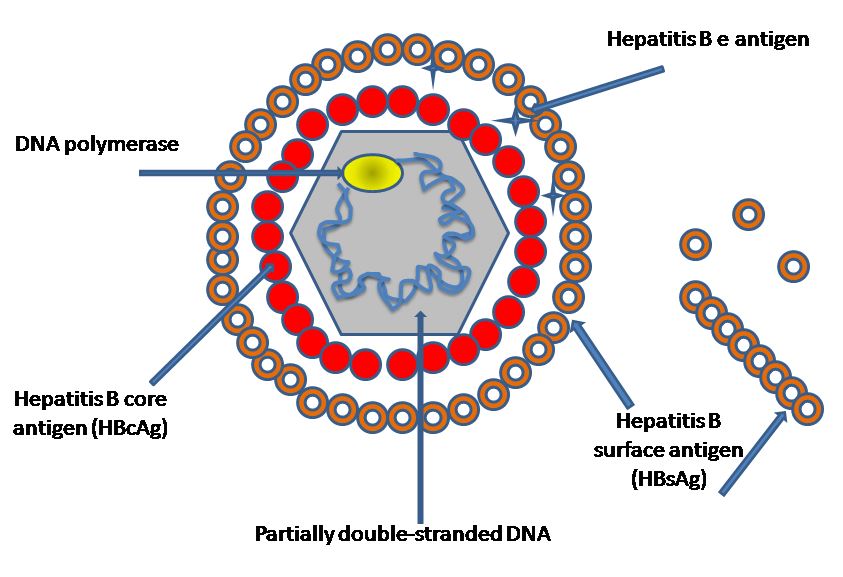HBV Surface Antigen
 Hepatitis B virus (HBV) is about 3.2 kb in size, with four partially overlapping open reading frames encoding surface, core, X proteins and polymerases. The HBV encodes three proteins of the HBsAg, which form the viral envelope, small (SHBsAg), middle (MHBsAg) and large (LHBsAg). These proteins are translated from two HBV sub-genomic mRNA transcripts, the Pre-S1 mRNA and the Pre-S2/S mRNA, in the endoplasmic reticulum (ER). HBV genomic replication occurs via reverse transcription of the pregenomic RNA (pgRNA), a greater than genome length transcript in the cytosol, thus the HBsAg ER-secretory pathway and the viral DNA replication pathway can be viewed as distinct but cross-regulated processes within the infected hepatocyte. All three envelope proteins have a glycosylated form responsible for the secretion of viral particles.
Hepatitis B virus (HBV) is about 3.2 kb in size, with four partially overlapping open reading frames encoding surface, core, X proteins and polymerases. The HBV encodes three proteins of the HBsAg, which form the viral envelope, small (SHBsAg), middle (MHBsAg) and large (LHBsAg). These proteins are translated from two HBV sub-genomic mRNA transcripts, the Pre-S1 mRNA and the Pre-S2/S mRNA, in the endoplasmic reticulum (ER). HBV genomic replication occurs via reverse transcription of the pregenomic RNA (pgRNA), a greater than genome length transcript in the cytosol, thus the HBsAg ER-secretory pathway and the viral DNA replication pathway can be viewed as distinct but cross-regulated processes within the infected hepatocyte. All three envelope proteins have a glycosylated form responsible for the secretion of viral particles.
HBV surface antigen is involved in hepatocarcinogenesis by stimulating virus gene expression and replication, suppressing p53 protein function, inhibiting immune-mediated apoptosis, and providing a growth advantage. HBV surface antigen is the major target of both the humoral and the cellular immune response and is often related to chronic immune-mediated liver cell injury. It plays an important role in the development of Hepatocellular carcinoma, one of the most frequently occurring malignant tumours in the world.
If you can’t find your product on this list? Please directly send email to
For Research Use Only. NOT FOR CLINICAL USE.
Online Inquiry
Welcome! For price inquiries, please feel free to contact us through the form on the left side. We will get back to you as soon as possible.
